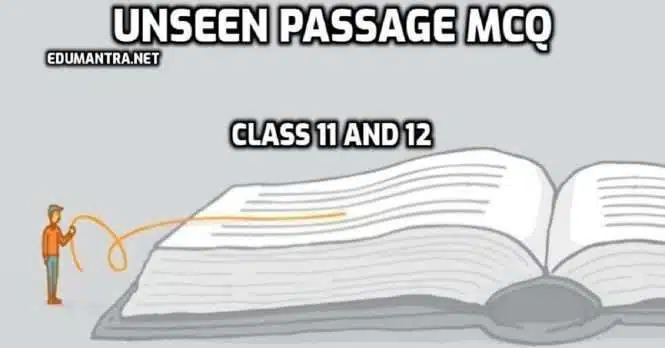
PASSAGE – 11
Read the passage given below.
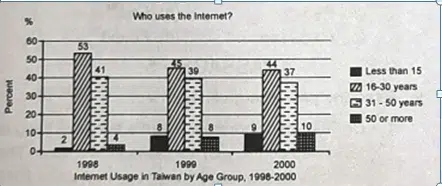
1. The graph shows Internet usage in Taiwan by age group 1998 to 2000. It shows changes in the age profile of Internet users in Taiwan between 1998-2000. The main users of the Internet in Taiwan are young adults between 16-30 years old. In 1998, they accounted for more than half of all users. In 1999, the number dropped slightly to 45% but even in 2000, they were the biggest group.
2. The second biggest group of users is aged between 31-50. They made up 41% in 1998, falling slightly to 37% in 2000. When combined with the 16-30 age group, over 94% of users in 1998 were between 16 and 50.
3. However, this number is dropping steadily as more children and older users log on. In 1999, the number of children was increased from 2% to 8%, and it continued to increase in 2000. There were similar increases for older users, rising from 4% in 1998 to 10% in 2000. In summary, while adults between 16 to 50 still represent the great majority of Internet users in Taiwan, their share is declining as more children and older users join the web.
Based on your understanding of the passage, answer any six out of the eight questions by choosing the correct option.
- Which of the following information is given in the above graph?
(a) Internet usage information
(b) Young adults data
(c) Group information
(d) All of the above
- According to the passage, how many users used internet of age 31-50 in 2000?
(a) 9
(b) 44
(c) 37
(d) 10
- According to the passage, how many users used internet of age less than 15 in 1999?
(a) 2
(b) 8
(c) 4
(d) 9
- Which of the following are main users of the Internet in Taiwan?
(a) Between 16 to 30
(b) Less than 15
(c) Above 50
(d) None of these
- Which of the following are the second biggest group of users?
(a) Between 16-30
(b) Between 31-50
(c) Between 16-50
(d) None of the above
- What is the difference of users in 1998-2000 for older users?
(a) 4%
(b) 10%
(c) 6%
(d) 14%
- How many users in 1998 were between 16-50?
(a) 41%
(b) 94%
(c) 37%
(d) 45%
- Find the antonym of the given word Wordy’ in the given passage.
(a) Fall
(b) Combine
(c) Summary
(d) Decline
ANSWERS:-
| 1. (a) Internet usage information |
| 2. (c) 37 |
| 3. (b) 8 |
| 4. (a) Between 16 to 30 |
| 5. (b) Between 31-50 |
| 6. (c) 6% |
| 7. (b) 94% |
| 8. (c) Summary |
CLICK TO DOWNLOAD UNSEEN PASSAGE MCQ FOR CLASS 11 AND 12 PDF
PASSAGE – 12
Read the passage given below.
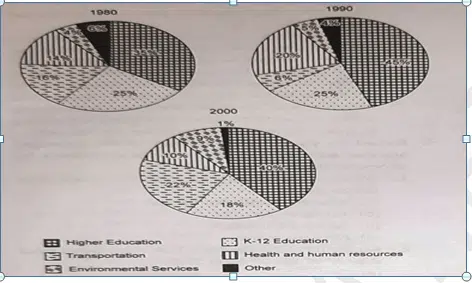
1. The charts show how much local authorities spent on a range of services in Some land in three separate years : 1980, 1990 and 2000.
2. In all three years, the greatest expenditure was on education. But while K-12 education saw a fall from 25% in 1980 to only 18% of spending in 2000, higher education remained the largest proportion, reaching 45% of total spending in 1990 and ending at 40% in 2000.
3. Expenditure on health and human resources had increased to 20% by 1990 before decreasing to only 10% by the end of the period. In contrast, the share of transportation saw an opposite trend. This cost decreased to only 6% of total expenditure in 1990 but rose dramatically in 2000 when it represented 22% of the total budget, Similarly, the cost of environmental services saw a rising trend, growing from only 4% to 9% by 2000.
4. Overall, higher education constituted the largest cost to local authorities, and while spending increased for transportation and environmental services, there were corresponding drops In expenditure on health and human resources and K-12 education.
Based on your understanding of the passage answer any six out of the eight questions by choosing the correct option.
- Which of the following year is described in the chart?
(a) 1980
(b) 1990
(c) 2000
(d) All of the above
- Which of the following local authority comes with the greatest expenditure?
(a) Transportation
(b) Higher Education
(c) Health and Human Resources
(d) Environmental Services
- How many percent K-12 education spent in 2000?
(a) 20%
(b) 40%
(c) 18%
(d) 25%
- What was the percent rate of Health and Human Resource during 1990?
(a) 18%
(b) 45%
(c) 25%
(d) 20%
- What was the percent rate of Transportation during 2000?
(a) 22%
(b) 6%
(c) 10%
(d) 45%
- What was the percent rate of Environmental Services during 2000?
(a) 4%
(b) 6%
(c) 9%
(d) 7%
- Find the synonym of ‘outlay’ in the given passage.
(a) Show
(b) Rate
(c) Expenditure
(d) Increase
- Find the antonym of ‘enlarge’ in the given passage.
(a) Reach
(b) End
(c) Decrease
(d) Period
ANSWERS:-
| 1. (d) All of the above |
| 2. (b) Higher Education |
| 3. (c) 18% |
| 4. (d) 20% |
| 5. (a) 22% |
| 6. (c) 9% |
| 7. (c) Expenditure |
| 8. (c) Decrease |
CLICK TO DOWNLOAD UNSEEN PASSAGE MCQ FOR CLASS 11 AND 12 PDF
PASSAGE – 13
Read the passage given below:
1. Covid-19 isn’t gone yet when a surge of dengue fever has come, with 13 cases in two days. The count for this time, 134, maybe least since 2017 but doctors fear a rise in November when the weather cools down. UT health director Dr. Amandeep Kang said: Our main problem is that due to the fear of Covid, people don’t let the health workers into their house, so we are unable to check for larvae and mosquito-breeding. However, we are on with the fogging exercise in the vulnerable areas.”
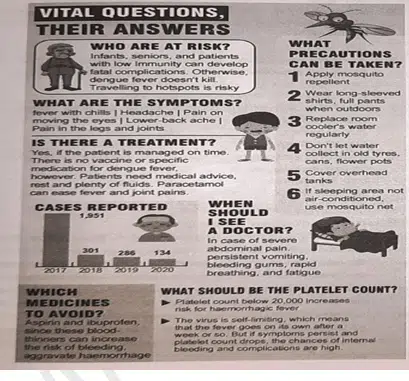
2. She said: The residents need to be cautious, as November is the surge time for dengue fever, They should check for the larvae and breeding spots on their own, since our staff can’t get inside.” The health department inspectors who went to the houses of positive cases found grounds in flowerpots, exposed overhead water tanks, refrigerator trays kept in the backyard, and water traps in the bathroom.
3. Dr. Kang said: “Covid has disrupted our lives already and if a vector-borne disease also breaks out, we will have a public health emergency.” Advising the public to discard the freshwater gathered in and around the houses, she said: “If the health department can’t look inside homes, people should discard collected water on their own. If there is a breeding ground for the larvae, call the Integrated Disease Surveillance Programme (IDSP) office for fogging: Already, public health experts in Chandigarh have braced for the third wave of Covid-19, which has swept Haryana and NCR.
Based on your understanding of the passage, answer any six out of the eight questions by choosing the correct option.
- As per the given chart, the highest number of dengue cases were reported in the year….
(a) 2020
(b) 2018
(c) 2017
(d) 2019
- People don’t allow the health workers to enter their houses because.
(a) they fear their valuables may be stolen.
(b) they are afraid of being infected with dengue.
(c) they are afraid of Covid-virus.
(d) people of Chandigarh are non-cooperative.
- According to the experts, who are at the risk of getting infected with dengue?
(i) Infants
(ii) Young boys
(iii)Senior citizens
(iv) People doing physical exercises
(v) People with low immunity
(a) (i), (iv) and (v)
(b) (ii), (iii) and (iv)
(c) (i), (iv) and (v)
(d) (i), (iii) and (v)
- The health department has started fogging exercise in order to………….
(a) teach a lesson to the people of the city.
(b) check mosquito breeding.
(c) control Covid cases.
(d) give warning about the increasing cases of dengue.
- According to Dr Kang, people should………….
(a) allow the health workers to come in.
(b) check for the larvae and breeding spots.
(c) expose their overhead water tanks.
(d) not bother about mosquitoes at all.
- Which of the following has not been listed as one of the symptoms of dengue?
(a) fever with chills
(b) toothache
(c) lower backache
(d) headache
- One is advised to see a doctor in the case of :
(a) Abdominal pain
(b) Persistent vomiting
(c) Rapid breathing
(d) Any of the above
- The word ‘discard’ in para 3 means…………
(a) to gather
(b) to spread
(c) to throw away
(d) to drink
ANSWERS:-
| 1. (c) 2017 |
| 2. (c) they are afraid of Covid-virus. |
| 3. (d) (i), (iii) and (v) |
| 4. (b) check mosquito breeding. |
| 5. (b) check for the larvae and breeding spots. |
| 6. (b) toothache |
| 7. (d) Any of the above |
| 8. (c) to throw away |
CLICK TO DOWNLOAD UNSEEN PASSAGE MCQ FOR CLASS 11 AND 12 PDF
PASSAGE – 14
Read the passage given below:
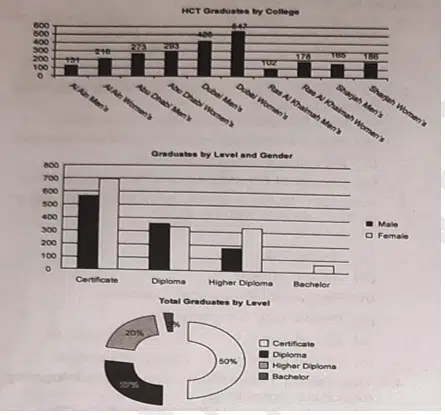
1. The chart shows changes in the share of international students who graduated from universities in different levels. The chart shows student enrolment by gender and level in different colleges of the Higher Colleges of Technology Colleges in the UAE.
2. There are clear differences in male and female enrolment. Females outnumber men in all the colleges, with almost 25% more students in Dubai Women’s college than in Dubai Men’s. Ras Al-Khaimah Women’s College has almost 180 students, compared to only 100 in the Men’s college.
3. Females also outnumber males by level, with almost double the number of men at Higher Diploma level (330 compared to 181). Only at Diploma level does the number of men slightly exceed that of women. Over half the students are in Certificate level, with less than a quarter at Higher Diploma or Bachelor level.
4. In conclusion, most students In the Higher Colleges are enrolled at Diploma level or below and the majority of students are women.
Based on your understanding of the passage, answer any six out of the eight questions by choosing the correct option.
- Which of the following have been enrolled in the colleges?
(a) Male
(b) Female
(c) Both (a) and (b)
(d) None of these
- According to the passage how many courses are there by the level?
(a) 3
(b) 4
(c) 5
(d) 6
- According to the passage how many number of females enrolled to the certificate level?
(a) 310
(b) 700
(c) 190
(d) 550
- According to the passage how many number of males enrolled to the Bachelor level?
(a) 310
(b) 190
(c) 550
(d) None of these
- According to the passage how many number of males enrolled to the Higher Diploma?
(a) 190
(b) 310
(c) 550
(d) 700
- According to the passage how many number of females enrolled to the Higher Diploma?
(a) 190
(b) 310
(c) 550
(d) 700
- Find the synonym of the word ‘equate’ given in the passage.
(a) Almost
(b) Outnumber
(c) Compare
(d) Double
- Find the antonym of the word ‘significantly’ given in the passage.
(a) Level
(b) Slightly
(c) Exceed
(d) Less
ANSWERS:-
| 1.(c) Both (a) and (b) |
| 2. (b) 4 |
| 3. (b) 700 |
| 4. (d) None of these |
| 5. (a) 190 |
| 6. (b) 310 |
| 7. (c) Compare |
| 8. (b) Slightly |
CLICK TO DOWNLOAD UNSEEN PASSAGE MCQ FOR CLASS 11 AND 12 PDF
PASSAGE – 15
Read the passage given below:
1. The UN’s 2017 International Year tells that sustainable tourism is an important tool for development, most importantly in poor communities and countries. Today sustainability —environmental, social, and economic — is increasingly recognised as the benchmark for all tourism business. As noted by the UN World Tourism Organisation, 57% of international tourist arrivals will be in emerging economies, by 2030. The various ‘Tourism Terms’ are defined as follows :
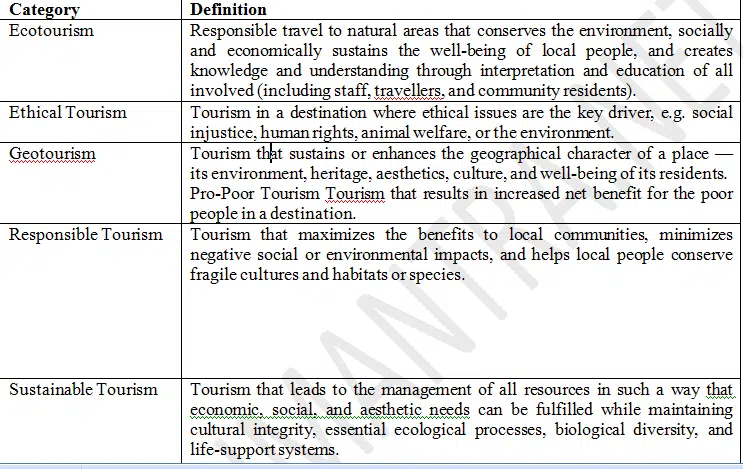
Based on data collected by a survey by Travel Bureau, the following market profile of an ecotourist was constructed:
Age: 35 – 54 years old, although age varied with activity and other factors such as cost.
Gender: 50% female and 50% male, although clear differences based on activity were found.
Education: 82% were college graduates, a shift In interest in ecotourism from those who have high levels of education to those with less education was also found, indicating an expansion into mainstream markets.
Household composition: No major differences were found between general tourists and experienced ecotourists”
Party composition: A majority (60%) of experienced ecotourism respondents stated they prefer to travel as a couple, with only 15% stating they preferred to travel with their families, and 13% preferring to travel alone.
(” experienced ecotourists = Tourists that had been on at least one “ecotourism” oriented trip.)
Trip duration: The largest group of experienced ecotourists- (50%) preferred trips lasting 8-14 days.
Expenditure: Experienced ecotourists were willing to spend more than general tourists, the largest group (26%).
Important elements of the trip: Experienced ecotourists’ top three responses were: (a) wilderness setting, (b) wildlife viewing, (c) hiking/trekking.
Motivations for taking next trip: Experienced ecotourists’ top two responses were (a) enjoy scenery/ nature, (b) new experiences/places.
Based on your understanding of the passage, answer any six out of the eight questions by choosing the correct option.
- The World Tourism Organisation of the UN, in an observation, shared that:
(a) emerging economies of the world will gain 57% of their annual profits from International tourists.
(b) countries with upcoming economies shall see maximum tourist footfall from all over the world in the next decade.
(c) a large number of international tourists in 2030 will be from developing countries.
(d) barely any tourist in the next decade shall travel from an economically strong nation to a weak one.
- One of the elements that is important to ecotourists on trip is:
(a) wild and untouched surroundings
(b) cultural exchange
(c) car and bus rides
(d) fully furnished flats
- Choose the option that lists the correct answers for the following:
I. Asha Mathew, an NRI, loves animals and wishes to travel to places that safeguard their rights and inculcate awareness of their rights. What kind of tourist is she?
II. Gurdeep Singh from UK is an environmental scientist and has always chosen to travel to places that are examples of a symbiotic relationship between man and nature. What kind of tourist is he?
(a) I is an ecotourist and II is a geo-tourist.
(b) I is an ethical tourist and II is a geo-tourist.
(c) I is a sustainable tourist and II is a pro-poor tourist.
(d) I is a geotourist and II is a responsible tourist.
- In the market profile of an ecotourist, the information on gender indicates that :
(a) female ecotourists were more than the male ecotourists.
(b) the activity preferences were varied in females and males.
(c) the choice of things to do on a trip were quite similar for both the genders.
(d) male ecotourists were frequent travellers.
- The education aspect in the market profile of the ecotourist revealed that :
(a) mainstream market trends were popular with undergraduates.
(b) ecotourists were only those who had basic education.
(c) mainstream markets were popular tourist destinations for educated ecotourists.
(d) ecotourism was no more limited to the small group of highly educated travellers.
- According to the survey conducted by the Travel Bureau, the total percentage of experienced ecotourists who DID NOT prefer to travel alone was:
(a) 60%
(b) 75%
(c) 15%
(d) 13%
- Choose the option that lists statement that is NOT TRUE.
(a) Economically backward countries will benefit from sustainable tourism.
(b) The tourism business currently recognizes sustainability as an important factor.
(c) Emerging economies will receive negligible international tourists in the near future.
(d) The sustainability factor in tourism is a significant means for development.
- Who isn’t an experienced ecotourist?
(a) The person who has travelled as an ecotourist once earlier.
(b) The person who is yet to travel even once as an ecotourist.
(c) The person who is a regular ecotourism enthusiast and traveller.
(d) The person who is not regularly travelling on ecotourism trips.
ANSWERS:-
| 1. (b) countries with upcoming economies shall see maximum tourist footfall from all over the world in the next decade. |
| 2. (a) wild and untouched surroundings |
| 3. (b) I is an ethical tourist and II is a geo-tourist. |
| 4. (b) the activity preferences were varied in females and males. |
| 5. (d) ecotourism was no more limited to the small group of highly educated travellers. |
| 6. (b) 75% |
| 7. (c) Emerging economies will receive negligible international tourists in the near future. |
| 8. (b) The person who is yet to travel even once as an ecotourist. |
CLICK TO DOWNLOAD UNSEEN PASSAGE MCQ FOR CLASS 11 AND 12 PDF